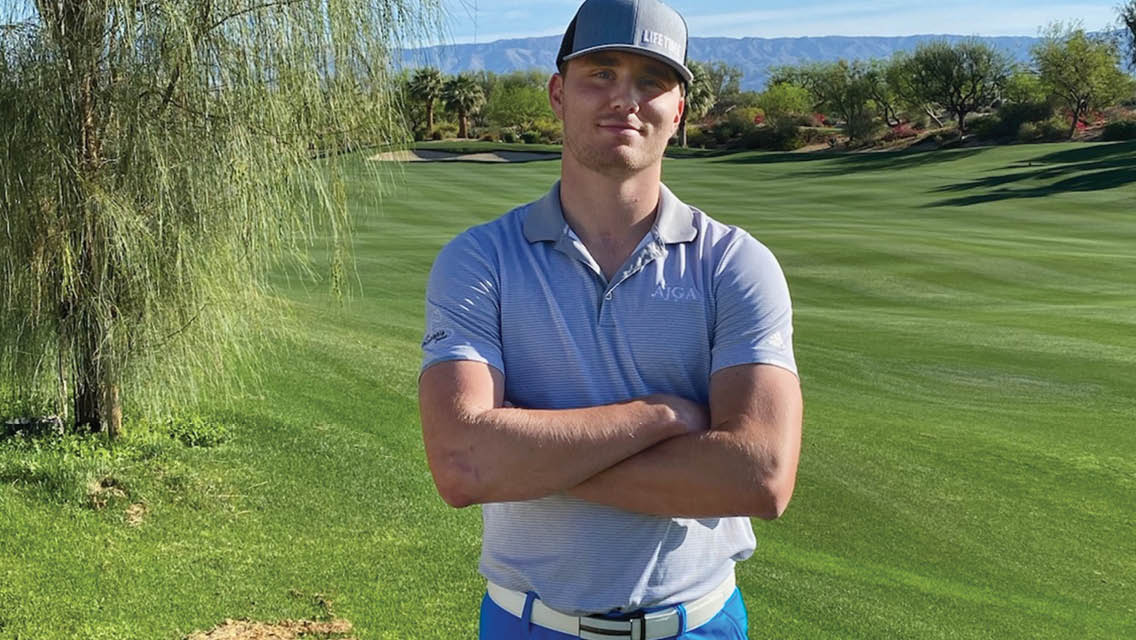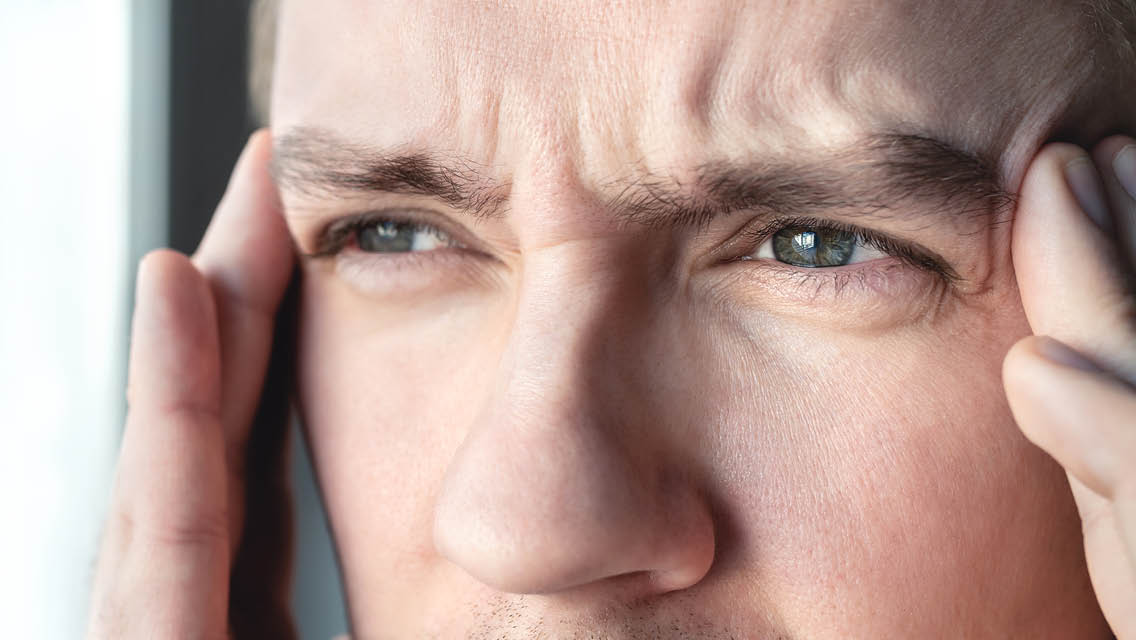I was an incoming freshman at the University of Colorado in the summer of 2018, thankful to have received a full golf scholarship. I’d played varsity golf all four years of high school, won the Colorado State Championship for my division as a junior, and set my school’s record for the lowest round in its history. I dreamed of playing on the PGA (Professional Golfers’ Association) Tour.
But on July 22, 2018, I lost the ability to reach for the future I’d imagined. In a matter of seconds, my life changed forever when a drunk driver ran a red light and hit me as I walked across an intersection.
Of course, the miracle is that I have a future at all — no one expected me to live through the night. My face and skull were shattered, as was my elbow. I had severe bleeding and swelling in my brain. I was in a coma for a month.
Everyone celebrated after I regained consciousness, yet I was unaware of what had happened. My parents had to explain that I had suffered a traumatic brain injury. I would need to learn to walk, talk, and eat again. I couldn’t believe that someone’s momentary carelessness would continue to affect me every day.
Recovery and Reconciliation
After my surgeries at Denver Health, I was transferred to nearby Craig Hospital, where I spent three months in rehabilitation, followed by another year of outpatient treatment. The next step of my journey took me to a longer-term rehab facility in Omaha, Neb., for six months.
So while my friends headed to college shortly after my accident, I was relearning how to feed and clothe myself. As painstaking as it was to learn these mundane tasks again, I struggled even more with reconciling who I was now with the elite athlete I had been.
When I was a kid, basketball was my sport — until knee pain forced me out of the game. After that, I took a couple of golf lessons when I turned 12, and then I entered my first tournament. There was only one other person in my age bracket. We both shot 91 on the first day, but I shot 89 the second day and won. I was so pumped! I fell in love with golf then and there.
Having a natural talent for the sport was helpful, but I worked hard to win the high school state title. My dream was to play in college, and I thought the University of Colorado in Boulder would be a great step to my ultimate goal — the PGA Tour. I trained seven days a week to get there.
All that changed after the accident. On March 7, 2019, I went with my physical therapist, occupational therapist, and speech therapist to the PGA Tour Superstore in Greenwood Village, Colo., to hit balls. They had to hold me because I couldn’t keep my balance while swinging. Even so, I was glad to try, and grateful for the goofy picture we took.
For a while after that, it was more painful to play and not live up to my earlier potential, so I turned my focus to other things.
Moving Forward
In the summer of 2020, I enrolled in an online cognitive-retraining program at Coastline College in California. The classes met four days a week for three hours.
We spent the first two hours of each session on cognition — retraining the brain to do tasks that once had come easy and learning how to compensate for or repair damaged executive-function skills, such as organization, time management, and problem-solving.
In our third hour, we worked through psychosocial issues in groups, supporting each other through our experiences as brain-injury survivors. It was this part of the program that helped teach me how to persevere whenever I felt stuck in social situations.
Before I enrolled, I would often become frustrated if I couldn’t communicate as well as I’d expected. Since graduating from the program in December 2021, I’m better able to express myself, and I’m more patient with myself.
Earlier that year, I also joined Life Time and started working with a personal trainer twice a week and a Pilates instructor once a week. I arrived with clear goals: I wanted to improve my gait, relearn how to jump, improve my hand–eye coordination, and be able to play golf. Most of all, I wanted to feel like an athlete — to challenge my body and see what I could do with it again.
Finding My Center
I’d previously tried Pilates to improve my golf game, but it became critical to my training after the accident. The Cadillac, a bed with a metal frame around it to which you can attach springs, bars, ropes, and pulleys, is particularly important because the support and resistance of its springs help me move in ways I’m not always able to on my own. Though I can walk, sometimes my gait isn’t as even as I’d like it to be. Working on the Cadillac re-creates a better gait pattern that I can practice without bearing weight.
My personal trainer, Alex Jordan, and my Pilates instructor, Devon Janclaes, each worked with me on balance and stability. Devon focused on helping me use all the parts of my body together. Some exercises involved holding a squishy ball between my legs that reminded me to engage my center. I didn’t have much control on my right side when we first started because my brain wasn’t signaling that leg to move. If I dropped the ball during an exercise, it meant I didn’t have the alignment and control I needed.
Alex and Devon both encouraged me and helped me do things I thought I’d never do again — like jumping. I was scared to try when I started training, but after four months, I could jump again. They boosted my confidence and gave me space to have fun. Recovery can be lonely; with Devon and Alex, I found a sense of community and a positive outlook.
Back Swinging
Since I began working with Alex and Devon, I’ve gained enough balance to swing a club on my own. Now I’m focusing on building distance.
There are many things I’m working to improve, but overall, the biggest change in my golf game is playing without my ego. Although Oliver 1.0 could never do what Oliver 2.0 can do: play golf and miss the ball, laugh it off, and not be frustrated.
Some days are better than others. I still struggle with some spasticity, and I’m working to regain more independence by reclaiming my driver’s license. Meanwhile, I keep working on my hand–eye coordination and improving my reaction time.
For so long, I felt like I was stuck. I was always thinking about therapy, but never thinking about what to do after therapy. After experiencing the ways Alex and Devon challenged me and helped make me a better person, I’ve started thinking about my future, and I’ve decided that I want to become a personal trainer. I want to return the same generosity to others who need the motivation.
Oliver’s Top 3 Success Strategies
- Focus on the Now. “You can hope and dream about the future, but ultimately the only thing you have control over is the here and now,” says Oliver.
- Seize the day. “As I come further out of my injury, I realize giving my all every single day, both physically and mentally, is as much the right way to live as an approach to rehabilitation.”
- Keep Trying. “Falling short of your goal isn’t failing so long as you try again.”
Tell Us Your Story! Have a transformational healthy-living tale of your own? Share it with us!
This article originally appeared as “A Miracle and a Mulligan” in the September 2022 issue of Experience Life.







This Post Has One Comment
This is such a blessing and miracle for such a good kid.